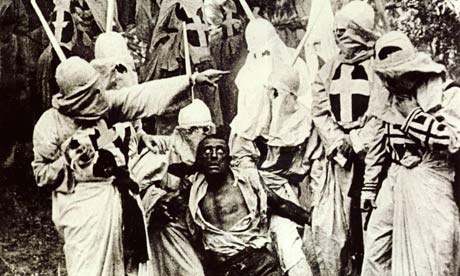
By Eric Jessen 9/26/09
La Chinoise is a wonderful mockery of 60's college educated pop-tweens, featuring director Jean-Luc Godard's trademark zany bits of anti-American, anti-capitalist jest and a rapid-fire pace. But after watching about the first ten minutes, it seemed as though Godard had no intention of letting me catch up, or letting me in on the gag. Allusions to poetry, movies and history clutter the dialogue. My head nearly exploded trying to unscramble Shakespeare, Sade, and Kafka's “Metamorphosis,” Murnau, Eisenstein and Johnny Guitar, and Mao, Che and Stalin. Much of La Chinoise is a string of confusion and frustration. Godard sprints through his script (based loosely on Dostoyevsky's novel “The Possessed”) seemingly leaving ideas hanging in bunches. But what separates La Chinoise from other of Godard's political films, is that it's not mean spirited. And near the end, Godard pauses, allowing me to recollect and gather my senses. In retrospect, La Chinoise has remarkable foresight.
Godard shows a genuine love for and great understanding of 19-20ish college educated kids who fancy themselves new-wave communists, flirting with terrorism over summer break. These prim looking dolls (usually Anna Karina, in this case Anne Wiazemsky, Juliet Berto and Jean-Pierre Leaude) scamper around planning bombings and assassinations, playing revolutionaries: Juliet Berto crouches behind a wall of Mao's “little red books,” having transformed her radio into a machine gun. In the previous scene, she wears a rice-paddy hat as cardboard toy planes flutter over her head. And when these recreational Marxists talk socialism, philosophy, and the Vietnam War they clearly have absolutely no idea what they're saying. They are only pretending, criticizing LBJ as a sort of hip new jargon.
For one of the five “Marxist Leninist” revolutionaries, Veronique (Anne Wiazemsky, the girl with the donkey in Bresson's “Balthazar”), holding a cigarette gently between her fingers, dangling it in front of her mouth, slouching over, looking down, speaking softly and calmly, is her way of convincing everyone she's serious. For Leaude, as Guillaume, it's showing the unbridled enthusiasm and eagerness to scream against capitalism and recite the “little red book.” In the more quiet scenes, a subtle twitch of an eyebrow, a glance at 10 o'clock, a slight curl up of the corner of the mouth and we know for these kids it's all in fun.
When Veronique sits down with one of her professors, Francis Jeanson, a former radical himself from the Algiers days, Jeanson unravels the “Marxist Leninist's” not-so-well-thought-out plans. Veronique tells Jeanson her terrorist group intends to bomb the universities to give the bad educational system in France a chance to start fresh. Jeanson then simply asks, “What next?” and Veronique stutters. By then, I start to understand what Godard is driving at. In the late 60's, having been warped and desensitized by a bombardment of Marvel-comic-color advertising and media coverage of radical political groups, if college tweens are looking for a way to stand out and “express themselves,” what better way than to join a radical terrorist group? If they're looking for a fun activity on a mid-summer afternoon, what's more exciting an outing then a trip to city hall to assassinate a political leader. In Godard's ironically joyous point of view, thus is the psyche of the kids of “Marx and Coca-Cola.”





